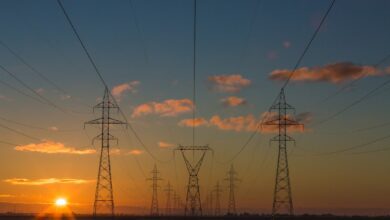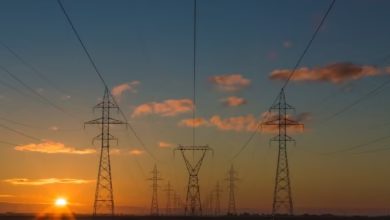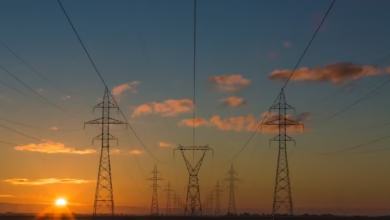Harnessing Hydropower: A Key Player in the Global Energy Transition Towards Renewable Solutions

As the world grapples with the pressing challenges of climate change and the urgent need to transition to cleaner energy sources, hydropower emerges as a vital player in the renewable energy landscape. Harnessing the power of flowing water, hydropower is not only one of the oldest forms of energy generation but also a sustainable solution that holds significant promise for the future. This article explores the multifaceted role of hydropower in the global energy transition, highlighting its efficiency and effectiveness compared to fossil fuels and nuclear energy. We will delve into the environmental impacts, energy security, and the latest innovations in energy storage and smart grids that enhance hydropower's contributions to green energy markets. By understanding the dynamics of hydropower within the context of global energy trends and policy, we can better appreciate its potential to drive energy investments and foster a more sustainable energy economy. Join us as we navigate the intricacies of hydropower and its pivotal role in shaping a resilient energy future.
- 1. The Role of Hydropower in the Global Energy Transition: A Sustainable Solution for Renewable Energy
- 2. Comparing Hydropower with Fossil Fuels and Nuclear Energy: Efficiency, Environmental Impact, and Energy Security
- 3. Innovations in Energy Storage and Smart Grids: Enhancing Hydropower’s Contribution to Green Energy Markets
1. The Role of Hydropower in the Global Energy Transition: A Sustainable Solution for Renewable Energy
Hydropower plays a pivotal role in the global energy transition toward a more sustainable future. As one of the most established sources of renewable energy, hydropower harnesses the kinetic energy of flowing water to generate electricity, providing a reliable and efficient alternative to fossil fuels and nuclear energy. With increasing concerns about climate change and the urgent need to reduce greenhouse gas emissions, hydropower emerges as a cornerstone of green energy initiatives worldwide.
In the context of global energy trends, hydropower contributes significantly to energy security by diversifying energy sources. Unlike fossil fuels, which are subject to volatile market prices and geopolitical tensions, hydropower offers a stable and predictable energy supply. This stability is essential for energy markets that are increasingly focused on sustainability and resilience. Moreover, hydropower facilities can be integrated into smart grids, enhancing energy efficiency and enabling better management of electricity demand and supply.
As countries aim to meet their energy policy goals, investments in hydropower present a cost-effective solution. With advancements in energy storage technologies, hydropower can also support the integration of intermittent renewable sources like solar power and wind energy. This synergy is crucial as energy transitions require reliable backup systems to ensure a consistent energy supply. By storing excess energy generated during peak production times, hydropower can help stabilize the grid and reduce reliance on thermal energy and fossil fuels, contributing to a lower carbon footprint.
Additionally, hydropower aligns with the growing focus on distributed energy systems. These systems enhance energy resilience and provide communities with localized energy solutions. When combined with energy R&D, innovations in hydropower technology can lead to more efficient turbines, improved environmental management, and reduced impacts on aquatic ecosystems.
In conclusion, as the world shifts towards cleaner energy solutions, hydropower stands out as a sustainable option that not only supports energy transitions but also enhances energy security, fosters economic growth, and mitigates the impacts of climate change. It is essential for policymakers and energy investors to recognize the value of hydropower in facilitating a robust, diversified, and sustainable energy future.
References:
(Include relevant citations here)
2. Comparing Hydropower with Fossil Fuels and Nuclear Energy: Efficiency, Environmental Impact, and Energy Security
Hydropower stands as one of the most prominent forms of renewable energy, particularly when compared to traditional energy sources such as fossil fuels and nuclear energy. Each of these energy types presents distinct advantages and drawbacks in terms of efficiency, environmental impact, and energy security.
When evaluating energy efficiency, hydropower is often lauded for its ability to convert the kinetic energy of flowing water into electricity with an efficiency rate that can exceed 90%. In contrast, fossil fuels, while historically dominant in the energy markets, typically achieve lower efficiency rates due to energy loss during extraction, transportation, and combustion. Nuclear energy, on the other hand, offers high efficiency in energy generation, often surpassing 30%, but introduces complexities related to waste disposal and operational safety.
Environmental impact is a critical concern in the energy transition toward sustainable solutions. Hydropower is generally considered a green energy source, as it produces no direct emissions during operation. However, the construction of dams can disrupt local ecosystems and displace communities, posing challenges for energy policy and environmental stewardship. In comparison, fossil fuels are significant contributors to climate change, generating substantial greenhouse gas emissions. Nuclear energy produces minimal carbon emissions, yet it raises concerns regarding radioactive waste management and the potential for catastrophic failures.
Energy security is another vital aspect when comparing these energy sources. Hydropower can contribute to energy security by providing a consistent and reliable energy supply, particularly when integrated into smart grids that manage energy distribution effectively. This integration can also facilitate energy storage, allowing excess energy generated during peak flow periods to be stored and utilized during dry spells. Conversely, fossil fuels can create vulnerabilities due to fluctuating global energy trends and geopolitical tensions, leading to energy imports that may compromise a nation’s energy security. Nuclear energy offers a stable and centralized energy source, reducing reliance on energy imports; however, it requires significant investment in safety and regulatory frameworks.
In summary, while hydropower presents numerous benefits as a renewable energy source, it is essential to consider its environmental and social implications in conjunction with its efficiency and role in energy security. As the global energy landscape continues to evolve, the integration of hydropower with other renewable sources like solar power and wind energy, along with innovations in energy storage and transportation, will play a crucial role in achieving a sustainable energy future.
References:
– International Hydropower Association. (2022). Hydropower's Role in the Global Energy Transition. Retrieved from https://www.hydropower.org/
– World Nuclear Association. (2023). The Role of Nuclear Power in the Energy Transition. Retrieved from https://www.world-nuclear.org/
– U.S. Energy Information Administration. (2023). Energy Efficiency Trends in Residential and Commercial Buildings. Retrieved from https://www.eia.gov/
– International Energy Agency. (2023). World Energy Outlook 2023. Retrieved from https://www.iea.org/
3. Innovations in Energy Storage and Smart Grids: Enhancing Hydropower’s Contribution to Green Energy Markets
Innovations in energy storage and smart grids are pivotal in enhancing hydropower's contribution to green energy markets, especially as the world shifts towards a more sustainable energy future. As renewable energy sources like solar power and wind energy become increasingly prevalent, the need for effective energy storage solutions becomes critical. Hydropower, traditionally viewed as a reliable source of energy, is now evolving through technological advancements that enable it to integrate more seamlessly with other renewable sources.
Energy storage systems, such as pumped hydro storage, allow excess energy generated during peak production times to be stored and released when demand is high. This capability not only improves energy efficiency but also stabilizes the grid, making hydropower a cornerstone in the transition from fossil fuels and nuclear energy to cleaner energy alternatives. By harnessing innovations in battery technology and hydrogen energy, hydropower plants can mitigate the intermittency of renewable sources, providing a consistent energy supply.
Smart grids are another significant advancement in the energy sector. They employ digital technology to monitor and manage the flow of electricity from various sources, including hydropower, bioenergy, and thermal energy. By optimizing energy transportation and enhancing energy security, smart grids facilitate a more dynamic and flexible energy market. These grids can efficiently allocate energy resources, reducing the reliance on fossil fuels and promoting energy exports and imports across regions.
The ongoing energy transition is underscored by global energy trends that favor sustainability and carbon capture technologies. As energy R&D progresses, hydropower's role in the energy economy is being redefined, allowing for greater energy investments that align with climate change goals. By integrating distributed energy resources and adopting innovative energy policies, hydropower can significantly bolster its footprint in the green energy landscape, contributing to a resilient and sustainable energy future.
In summary, the synergy between innovations in energy storage and smart grid technology not only enhances hydropower's efficiency but also solidifies its role as a key player in the global shift toward renewable energy. This evolution is crucial for meeting the demands of modern energy markets while addressing the pressing challenges posed by climate change.
In conclusion, hydropower stands as a pivotal player in the ongoing global energy transition, providing a sustainable solution that enhances the efficiency of renewable energy systems. As we compare hydropower with fossil fuels and nuclear energy, it becomes evident that hydropower not only offers substantial energy security but also presents a lower environmental impact, making it a preferable choice in the quest for clean energy sources. Innovations in energy storage and the development of smart grids further amplify hydropower's role in green energy markets, allowing for more efficient energy distribution and management.
As energy policies evolve to accommodate a diverse energy landscape, investments in hydropower and complementary technologies like bioenergy, thermal energy, and hydrogen energy will be crucial. These advancements will enable us to meet the demands of climate change while advancing energy economics and ensuring energy exports and imports are optimized for sustainability. Furthermore, integrating hydropower with other renewable sources such as solar power and wind energy will bolster energy innovations that drive the transition toward a greener future.
In embracing hydropower as part of a broader strategy that includes electric vehicles and distributed energy systems, we can effectively address global energy trends and foster a resilient energy economy. Together, these efforts will not only contribute to a sustainable future but also position hydropower as a cornerstone of our collective response to the challenges posed by climate change.





